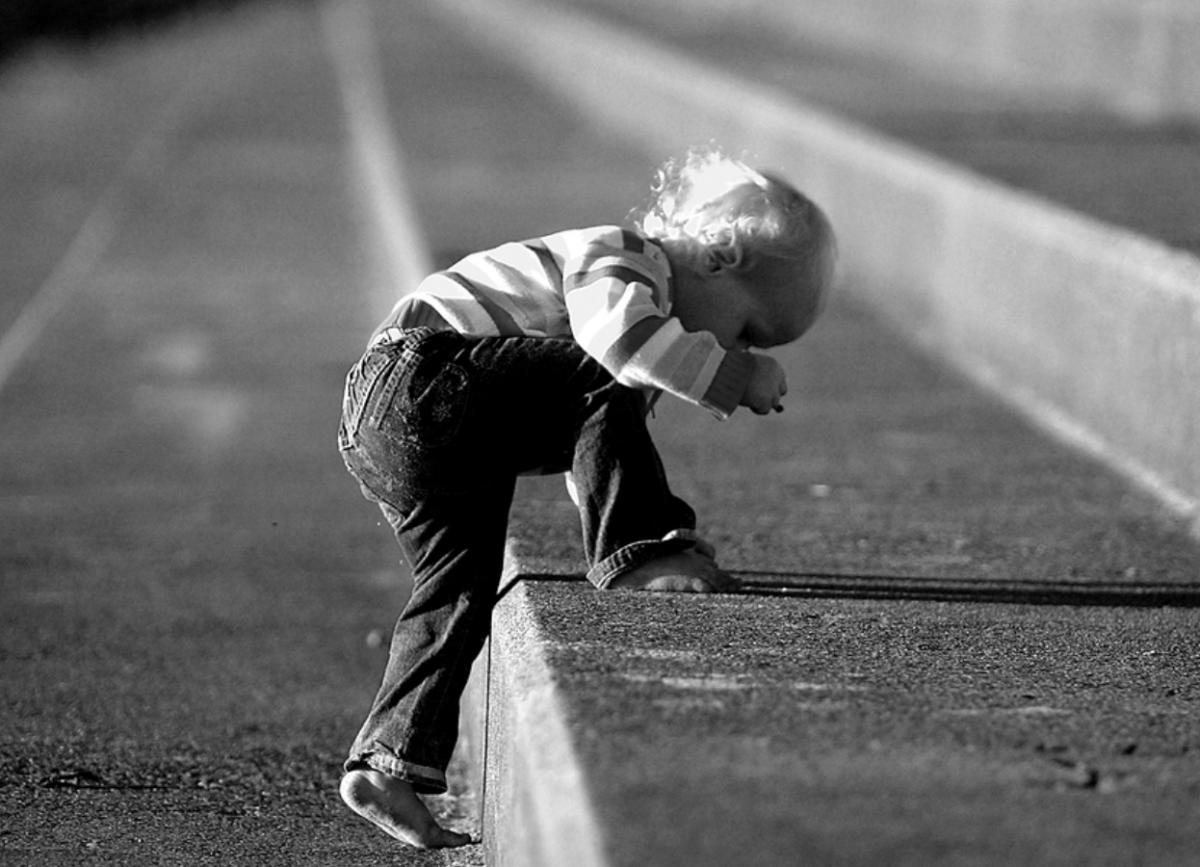“Just take Baby Steps.” Advice that we have heard and given most of our lives.
Seems pretty simple, doesn’t it? Just start with small, baby steps.
Until you realize how hard baby steps are.
What is the hardest thing to get a robot to do? Walk on two legs.
Baby Steps: That first networking call you make after losing your job.
Bipedal walking is the hardest movement to achieve in robotics. “Cassie,” the most successful biped to date, looks like the Empire’s menacing All Terrain Scout Transport (AT-ST) from Star Wars. She lacks a head and arms for one thing and basically looks creepy. In fact, just getting a robot to remain standing is challenging.
Baby Steps: The first event that you attend “solo” after your divorce.
We maintain our balance through a complex system of kinesthetic awareness and proprioception (knowing where your body is) that work together to control more than 600 individual muscles. That’s right, it takes about 600 muscles to walk. And our brains must guide each one in a complex balancing act.
Baby Steps: Hosting your first Christmas after losing a child.
To accommodate what our brain does, robots use sensors such as gyroscopes and accelerometers to judge spatial awareness, but they are not even close to matching the human body. Nor are the robot’s motors as strong or efficient as human muscles.
Baby Steps: Cleaning out your recently deceased spouse’s closet.
Humanoid robots have a very distinctive lumbering (and creepy) walk. To keep from falling over, their knees must be bent, and their torso must remain as stationary as possible. But it is not the way that we walk. To support our weight, we walk with straight legs, locking our knees with each stride.
Baby Steps: Planning your late son’s memorial charity.
When we walk, we are basically always off balance. That’s why we trip a lot. Our brains are using a lot of neural circuits to do a lot of complex kinematics and dynamics problems by instinct, and if we don’t get them right, we trip. And we have reflexes. Robots don’t have them, so they still have to do it the hard way, crunching numbers every millisecond.
Baby Steps: Unpacking your belongings into your tiny apartment after losing your home.
We also instinctually know how to move our feet and legs. For a robot, it’s complicated by either “too few options” or “too many options”. Constrain the joint (by keeping its knees flexed), and there is less math to do, but much less versatility in foot placement. Give the joint freedom and more math is required and more instability occurs.
Baby Steps: Buying a wig after being diagnosed with cancer.
Robotic walking is so primitive that every time the robot falls or walks out of its training environment, it needs someone to pick it up and set it back to the right position.
Baby Steps: That first time you admit to someone that you are in an abusive relationship.
Researchers don’t yet know how infants learn to walk. They don’t even know why they walk (given that crawling is relatively efficient).
Baby Steps: Volunteering at a shelter after you learn that you cannot have children.
Scientists have just recently identified neural networks in the brain that are necessary for infants to walk. These neural networks are not present at birth (which is why some mammals like horses walk right away and human babies cannot).
Baby Steps: Joining a book club to meet new friends to start building your new life.
One thing that scientists have discovered is that babies learn how to fall before they learn to walk. They learn to fall onto the soft padding of their tushy. Or into the arms of a loving caregiver.
Baby Steps: Adopting a cat to help you combat loneliness.
When we take these baby steps we learn how to fall and whose arms will catch us. And we learn to get up again and fall and get up again.
Baby steps are a good analogy for rebuilding after your life comes crashing down.
But there is nothing little about them.
Angela Rieck, a Caroline County native, received her PhD in Mathematical Psychology from the University of Maryland and worked as a scientist at Bell Labs, and other high-tech companies in New Jersey before retiring as a corporate executive. Angela and her dogs divide their time between St Michaels and Key West Florida. Her daughter lives and works in New York City.



Edith says
A reminder: It takes practice. “One thing that scientists have discovered is that babies learn how to fall before they learn to walk. They learn to fall onto the soft padding of their tushy. Or into the arms of a loving caregiver”
My grandfather used to tell me you had to learn to fall so you won’t get hurt. Once, he’d broken his arm falling down the stairs. We were headed out to physical therapy, when he fell again, down the porch stairs. I felt so helpless, as I was right there when he fell. He was pretty agile, in his 80s. He landed in the pacasandra, laughing, “did you see that? I did a summersult so I wouldn’t land on the concrete.” With his arm in a sling. I’m smiling with a tear in my eye, remembering… baby steps.
Thank you.
Angela Rieck says
What a sweet memory!